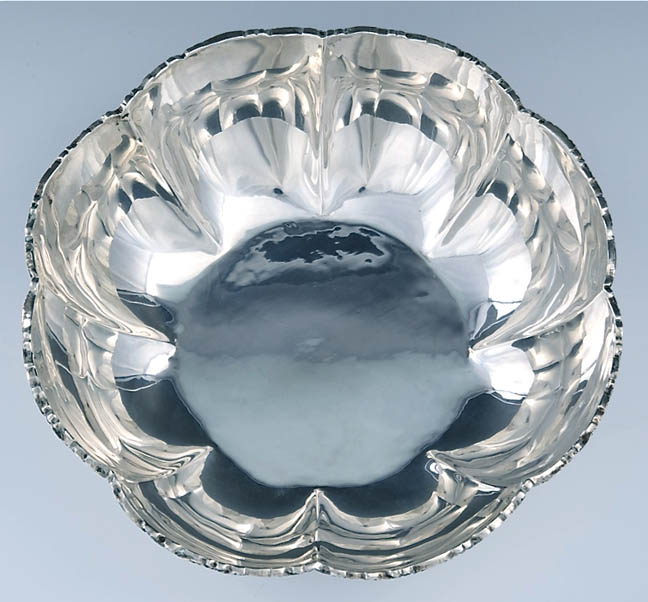

Title: Large Hand Hammered Mexican Sterling Silver Serving Bowl
Shipping: $65.00
Artist: N/A
Period: 20th Century
History: N/A
Origin: N/A
Condition: Museum Quality
Item Date: 1920 to 1940
Item ID: 3752
A Mexican Sterling Silver Serving Bowl. This looks to be a hand Hammered bowl. This fantastic and rare antique sterling silver hand hammered bowl were made by some of the best Mexican silversmiths. With lobed sides, applied cast foliate rim, the circular bowl measures apprx. 11"D x 3-1/4"H, marked on the underside. Weighs apprx. 25.25 toz. Condition: Good; a few tiny dents. This is absolutely exquisite work! It would make the perfect addition to a sideboard or dining table. The bowl was hand made from a single piece of sterling silver. The hammered workmanship is so great. The Silver is quite heavy, These where Made between C1920 to 1940. This would also go perfectly with an Arts and Crafts decor.
Link: http://en.wikipedia.org/wiki/Silversmith
A silversmith is a craftsperson who makes objects from silver and/or gold. The terms 'silversmith' and 'goldsmith' should be treated as synonyms: as the techniques, training, history, and guilds are or were largely the same. Silversmithing is the art of turning silver and gold sheetmetal into hollowware (dishes, bowls, porringers, cups, vases, ewers, urns, etc.), flatware (forks, spoons, knives, etc.), and other articles of Household silver. Although jewelers also work in silver and gold, and many of the techniques for working precious metals overlap, the trades of jeweler and Silversmith have distinct histories. Chain-making and gem-setting are common practices of jewelers that are not usually considered aspects of silversmiths. The tradition of making (iron / plate) armor was interrupted sometime after the 17th century. Silversmithing and goldsmithing, by contrast, have an unbroken tradition going back many millennia. The techniques used to make armor today (whether for movies or for historical recreation groups) are an amalgam of silversmith forming techniques and blacksmith iron-handling techniques. Silversmiths saw or cut specific shapes from sterling and fine silver sheet metal and bar stock, and then use hammers to form the metal over anvils and stakes. Silver is hammered cold (at room temperature). As the metal is hammered, bent, and worked, it 'work-hardens'. Annealing is the heat-treatment used to make the metal soft again. If metal is work-hardened, and not annealed occasionally, the metal will crack and weaken the work. Silversmiths can use casting techniques to create knobs, handles and feet for the hollowware they are making. After forming and casting, the various pieces may be assembled by soldering and riveting During most of their history, silversmiths used charcoal or coke fired forges, and lung-powered blow-pipes for soldering and annealing. Modern silversmiths commonly use gas burning torches as heat sources. A newer method is laser beam welding. Silversmiths may also work in copper and brass, although this is usually confined to practice pieces due to the cost of the metals